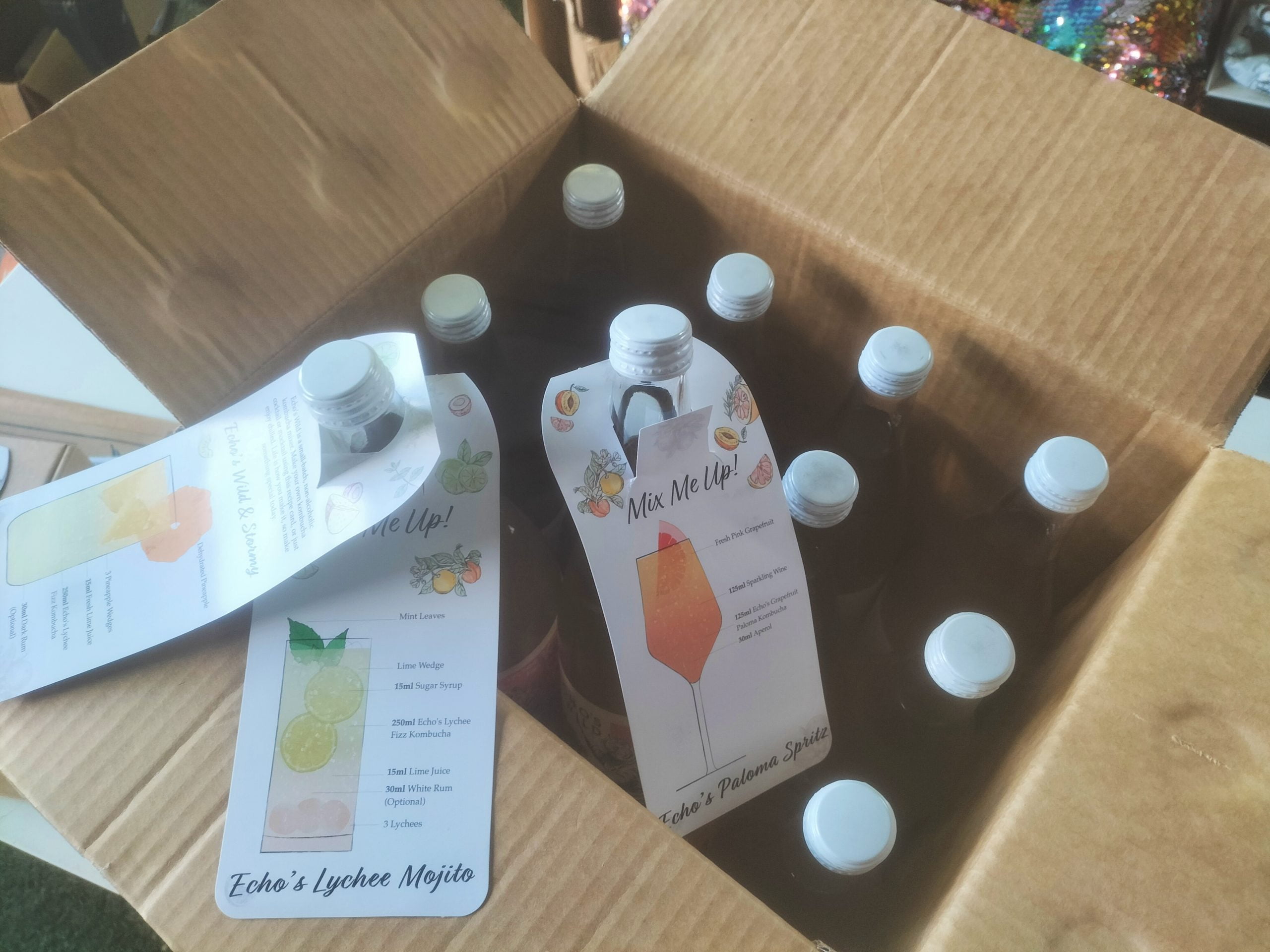
Walk into any café or supermarket today, and you’ll find rows of kombucha bottles promising probiotics and gut-health benefits. But the reality is, not all of them deliver. Many brands take shortcuts—pasteurising their brews, adding sugar after fermentation, or force-carbonating—to create a drink that may taste good but lacks the living cultures and organic acids that make kombucha a true health tonic.
Kombucha is only as good as the process behind it. Traditional brewing methods preserve its natural effervescence, probiotic diversity, and bioactive compounds. When done properly, the result is a dynamic, living beverage that supports digestion, immunity, and overall health. But how do you know if your kombucha is the real deal or just a fizzy flavoured tea dressed up as something more?
The answer lies in fermentation.
The Science of Fermentation
At its core, fermentation is a natural metabolic process where yeast and bacteria break down sugars, producing organic acids, gases, and beneficial compounds. In kombucha, this transformation is driven by a Symbiotic Culture of Bacteria and Yeast (SCOBY), which turns sweetened tea into a tangy, probiotic-rich drink.
A properly fermented kombucha goes through two key stages:


Primary Fermentation (7–30 Days)
The SCOBY consumes sugar and produces:
Organic acids – Aids digestion and gut health (acetic, gluconic, and lactic acid)
Probiotics – Live beneficial bacteria that support the microbiome
Antioxidants & polyphenols – Compounds from tea that help reduce oxidative stress
B vitamins & enzymes – Essential for energy metabolism and nutrient absorption
Organic acids – Aids digestion and gut health (acetic, gluconic, and lactic acid)
Secondary Fermentation (Bottle Conditioning)
This occurs after bottling, allowing further microbial activity:
Enhances probiotic diversity – Live cultures continue to multiply
Develops natural carbonation – Produces soft, champagne-like bubbles
Refines flavour complexity – The brew becomes more balanced over time
A 2021 university study published in Frontiers in Nutrition confirmed that kombucha, when properly fermented, positively impacts gut microbiota, reduces inflammation, and supports immune function. Another study in PubMed highlighted that raw, unpasteurised kombucha contains significantly higher probiotic diversity than commercially altered versions, making it far more effective for gut health.
To better understand how fermentation transforms kombucha, here’s a breakdown of the key changes that occur at each stage:
| Stage | Duration | Key Process | Health Benefits |
| Primary Fermentation | 7-30 days | SCOBY consumes sugar, producing probiotics, acids, and antioxidants | Supports gut health, boosts immunity, and aids digestion |
| Secondary Fermentation | 3-14 days | Natural carbonation develops, probiotics multiply further | Enhances microbial diversity and flavour complexity |
| Mass-Produced Kombucha | Varies | Pasteurised, force-carbonated, or sugar-added post-fermentation | Reduced probiotics, fewer health benefits |


What Happens When Shortcuts Are Taken?
Some kombucha brands, in an effort to meet commercial demand, stray from traditional brewing methods. The top issues with modern kombucha brewing are:
Pasteurisation Eliminates Live Probiotics
Pasteurisation is a common culprit. While it extends shelf life, it also kills off the live probiotics that make kombucha beneficial in the first place. What you’re left with is a sterile drink that may still taste like kombucha but lacks its natural gut-health properties.
Another trick in the mass-production playbook is forced carbonation. Authentic kombucha gets its natural fizz through bottle conditioning—a second fermentation process that allows live cultures to continue developing in the sealed bottle. Some manufacturers skip this entirely, injecting CO₂ to create artificial bubbles. The result? A drink that’s more like soft drink than a living health tonic.
Then there’s the sugar issue. A properly fermented kombucha is naturally low in sugar because the SCOBY consumes most of it during fermentation. But some brands add sugar after the process to sweeten the drink, undermining its health benefits. The same goes for artificial flavours and preservatives, which interfere with the microbial balance and compromise the integrity of the brew.
A university-backed study commissioned by Good Brew found that kombucha made using traditional fermentation methods retained significantly higher levels of probiotics, polyphenols, and organic acids compared to mass-produced alternatives. This means that what’s inside the bottle matters as much as what’s on the label.
What makes a Good Brew? How to Spot a Properly Fermented Kombucha
A real kombucha doesn’t need gimmicks—it speaks for itself. Start with the label. Words like “raw,” “unpasteurised,” or “live cultures” are good indicators that the drink contains active probiotics. The ingredient list should be simple: tea, water, sugar (for fermentation, not as an additive), and live cultures.
Look closely at the carbonation. If the bubbles are soft and champagne-like, it’s naturally fermented. If they’re sharp and overly fizzy, the drink is likely force-carbonated. And don’t be put off by sediment or strands of SCOBY floating in the bottle—that’s a sign of an active, living brew.
Taste is another giveaway. A properly fermented kombucha has a slight acidity balanced by natural sweetness, a result of the fermentation process running its full course. If it’s overly sweet, chances are the sugar was added post-fermentation.
At Good Brew, we are committed to crafting authentic, living kombucha using high-quality ingredients, filtered water, and traditional fermentation techniques. Ask us about purchasing your own kit to brew it yourself, or buy our pre-bottled drinks.


Further Reading
For those interested in the science behind kombucha fermentation and its health benefits, here are some key studies and resources:
- University research commissioned by Good Brew – https://goodbrew.com.au/about/research/
- Study on kombucha and gut microbiota (Frontiers in Nutrition, 2023) – https://www.frontiersin.org/journals/nutrition/articles/10.3389/fnut.2023.1036717/full
- Analysis of probiotic properties in raw vs. pasteurised kombucha (PubMed, 2021) – https://pubmed.ncbi.nlm.nih.gov/34960001/

 54 Hope St, Brunswick VIC 3056
54 Hope St, Brunswick VIC 3056
